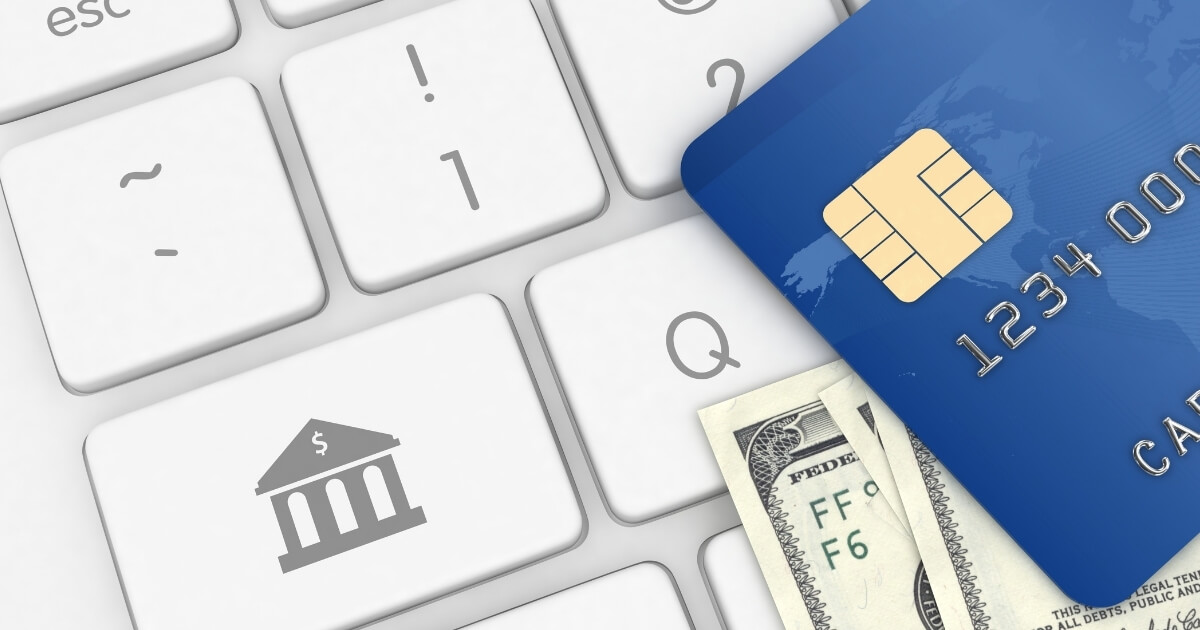The Battle Between Embedded Finance and Value-Added Services

In the last decades, the automotive industry has undergone a transformation where these traditional segments evolved into new cross-segment, multi-purpose, and highly-customized vehicles.
The banking sector is at the beginning of a similar evolution in which embedded banking boundaries between financial and non-financial products will start to fade.
Early days of embedded finance
If we ask experts about the most challenging projects delivered by the financial industry in the past three years, complying with PSD2 regulations would definitely make the top of the list for EU-based institutions.
To meet the requirements, Account Servicing Service Providers (such as banks) had to build secure interfaces that enabled authorized third parties (TPPs) to access payment accounts data and services once restricted to financial institutions. For the majority of banks, this was their first experience with enabling API access to their internal systems, creating developer portals, and publishing technical documentation to third parties. The fact that TPPs could access data without a need for contracts with the service provider was also a new paradigm for many IT support units within banks.
The PSD2 regulations marked the beginning of a new era, the open banking era. This paved the way for new services and products provided by those benefiting from the regulations, the fintechs, and in many cases banks with a TPP license. There were, of course, earlier attempts to build ecosystems based on API services offered by a handful of forward-thinking banks such as BBVA, Citi, and DBS, to name a few, but they were aimed at bilateral relationships with pre-selected partners.
The revolution does not end there. The phrase open banking is gradually losing its popularity over phrases such as open finance, banking as a service, and embedded banking/finance. What this means is that you no longer have to own a banking system or be a bank to provide banking services or to combine your core line of services with a financial element embedded in your app.
What’s the fuss about embedded finance?
According to a study by Juniper Research, the value of the embedded finance market will exceed $138 billion in 2026, up from just $43 billion in 2021, demonstrating the rapid increase in the popularity of this trend.
Lightyear Capital predicts that embedded finance will generate $230 billion in revenue by 2025.
Elsewhere, forecasts suggest it could grow into a $7 trillion industry in ten years.
The benefits for users and businesses:
- Seamless integration of services. Non-banking firms can easily integrate services with fewer security checks and verifications involving the end user.
- Enhanced customer satisfaction. Consumers are more satisfied with more services accessible in one place. They no longer need to use multiple apps or web platforms to make purchases or transfer funds, leading to greater brand loyalty.
- Businesses can boost profits. The convenience and ease of service means consumers are more likely to make a repeated purchase while businesses have the opportunity to cross-sell more products.
- Delivers usable business insights. This tool can help give businesses a more detailed understanding of customer behaviors and their needs to enhance future strategies.
- Enabler for new business models. New and existing organizations can invent out-of-the-box ways to generate profits and attract customers, ways that have not been possible before the open banking revolution.
What are the most common use cases?
The most successful implementations are the ones that focus on the customer experience and use the financial feature in an almost invisible way to increase the quality of the service.
Do you remember the first time you got out of a Uber without having to do anything to pay for the ride? It felt weird at first as we were used to ending the journey with a cash or card transaction that sometimes could take a few minutes to complete. With the payment feature embedded in the experience, it happens without any action required from the customer, almost like magic. Of course, there is a card on file involved, a payment gateway, a bank account, clearing and settlement processes, fraud detection, and dozens of other operations happening in the background, but from the perspective of the user this is all seamless and invisible.
We are seeing more and more examples of such approaches. The buy now, pay later option is being integrated into the shopping experience as part of the retail app, a browser plug-in, or a point-of-sale terminal. Customers are offered smooth payment experiences that limit the effort required to complete the transaction.
There are both practical and psychological aspects of such implementations. On the one hand, the transaction operation is easier and faster to complete, which results in lower basket abandonment rates or faster handling time at physical locations. On the other hand, the not-so-pleasant feeling of parting with your money is replaced by the joy of getting the desired goods or services without even thinking about the need to pay. As we know, the payment will come later, so why worry about this now?
Service providers are also offering solutions based on access to accounts granted by the customers. A shopping mall provides the users of their app automatic discounts or cashback for transactions occurring at their location. The customers are happy, since they no longer have to handle discount vouchers or codes or show a loyalty card at purchase, and the shopping mall can build better profiles and customize their offering based on the access to bank account transaction history.
There are endless possibilities depending on the “ingredients,” and we will be seeing further examples of embedded finance as the ecosystem grows with more APIs and new industries making use of the new capabilities.
How are banks reacting to this trend?
More and more financial institutions are discovering that a proactive approach towards APIs and cooperation with external partners can be a source of new revenue streams and a way to reach new customers.
The banks who did not treat PSD2 as a compliance burden, but also an opportunity, were quick to enhance their services through the use of APIs published by their competition. Apart from offering its customers account aggregation from multiple banks accessible through one bank application, the transaction history and account information were quickly used in the context of risk assessment, loan applications, and identity confirmation.
Premium APIs, offered at commercial terms beyond the minimum required by regulations, are another way of attracting developers and partners looking to integrate with financial service providers. This is often amplified by hackathons, accelerator programs, or other events aimed at expanding banks’ presence to a wider ecosystem.
However, the same ecosystem also allows expansion of the core banking offering by embedding services into mobile banking apps that were previously not associated with a bank. Sound familiar? Just like retail apps are embedding financial services to create a better user experience, the banks are doing the same through embedding non-financial services to their apps.
What are value-added services?
With the increasing competition from the new market players, the banks had to redefine what a mobile banking application is. The early days of mobile banking were focused on moving the internet banking capabilities to the smaller screen in a way that was contextually justifiable. In most cases, this was achieved through mobile versions of the desktop service with fewer features.
The next step was building applications. This allowed integration with native features of the smartphones that added value to what customers knew from the desktop versions. The first features based on camera and GPS started to be added to the mobile banking apps. More and more efforts were made to match the UX and UI with the high standards set by the non-banking apps sharing the same real estate of the mobile phone screen.
The current trend is enhancing banking apps through integrations with services normally not associated with a mobile banking app.
Below are a few examples of value-added services:
- Transport (parking tickets, public transport tickets, motorway tolls)
- Benefits (discount programs, loyalty cards storage, private health packages)
- Top-ups (prepaid cards, video games, streaming services)
- Identification (through integration with government-related schemes)
- Sustainability (carbon footprint calculators, charity causes)
Banks want their customers to engage more frequently with their apps by adding new contextual features. Since the customer is already securely logged in to the application, it is safe to offer services that would otherwise require additional layers of authentication. This is often a key factor for customers looking for secure and trusted service providers. A bank with its high security standards and fraud monitoring process can appeal to users reluctant to download apps from less known providers.
It can also be a means to add new revenue streams as a seller of third-party services.
Are super apps the future and do we really need them?
With non-banking apps adding banking services and banks enhancing their apps with external services, are we on the path to a generation of super apps that will be a one-stop shop for the customers?
There is no easy answer to this question. The global social media apps are starting to resemble super apps with their multiple functionalities, but they still are focused on the social interactions.
However, if we look at China, the birthplace of the most famous super apps, the story is much different. The local users are used to combos of features provided by one single provider. WeChat, apart from being a communication tool, has an ecosystem of mini apps that allows users to organize their life through the app, anything from making a reservation, ordering a taxi, getting the local news to making payments and getting loans.
A super app may seem like an ultimate goal, but this may not necessarily be the solution customers are looking for in other parts of the world. The freedom to choose services from multiple service providers instead of a single hub will often prevail. It also raises the concern about monopolistic competition and attracts attention from the regulators when done by the big tech companies.
An app with too many features sooner or later is at risk of deteriorating the user experience.
One of the reasons why fintech companies were so successful was that they focused on specific services and improved them to perfection. When adding further features and expanding the offering to include new services coming from various industries, it is very hard to deliver a quality UI that is easy to use.
Who will win this battle?
Similar to the foundations of PSD2 regulations, the embedded banking and value-added services will continue to foster innovation and ignite stronger competition among the market players. As a result, the customer will have access to convenient solutions with new features capitalizing on the new capabilities available through mixing banking and lifestyle. The banks that are betting on partnerships will be able to offer more value-added services in their apps and at the same time power services used by third parties using embedded banking in their solutions.
The tech revolution and partnerships in the automotive industry have given us electric cars with astonishing performance levels and comfort that are connected to infotainment systems and self-driving capabilities, to name a few. If played well, this can be a win-win situation for the financial industry and for the consumers, banks, and their partners. However, to achieve this, a continuous innovation process with the right partners is required to deliver services the customers will love.







